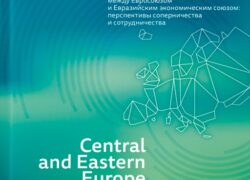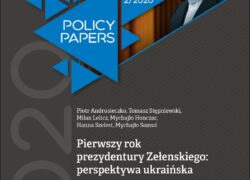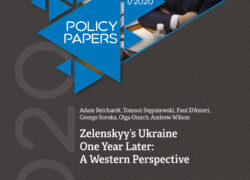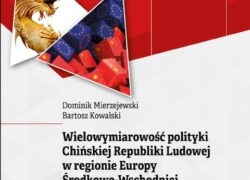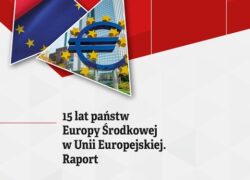Since the coronavirus began to spread in Albania, Prime Minister Edi Rama has endeavoured to be a most active leader and to keep in touch with the citizens constantly. Thus he constantly uses social media, publishing current COVID-19-related information and presenting the government’s activity. Furthermore, the prime minister has sent every Albanian a text message, instructing them how to protect themselves against infection.
As early as on 12th March the Albanian prime minister declared a war on the coronavirus in the name of both the state and the whole Albanian nation. Also, on 24th March the government introduced the state of natural disaster. All the actions undertaken at that time by the authorities were rationalized as intended to prevent the occurrence of the Italian variant.
The prime minister stressed that the state is prepared for four different scenarios of the COVID-19 pandemic; their specifics, however, have not been revealed. Edi Rama only informed the society that he had already appealed to the president of Turkey Recep Tayyip Erdoğan for help in case the apocalyptic scenario comes true. Still, it is not known whether Albania will receive any additional help from Turkey in the near future. Meanwhile, (20th March) the United States Ambassador to Tirana Yuri Kim stated that the US will provide help of the total value of 100 million dollars to Albania and other states fighting against the pandemic. In turn, the European Union – as it was announced by Olivér Várhelyi, the European Commissioner for European Neighbourhood Policy and Enlargement Negotiations – has already allocated 30 million euros for the Western Balkan countries so that the latter can acquire the necessary medical equipment as soon as possible.
Actions taken by the government as part of the war on the coronavirus. On 8th March the society was informed about the first two cases of coronavirus infection confirmed in the state – a father and a son who had earlier returned from Florence. The first, immediate decision was to ban flights and cancel ferry transport to Italy (until 3rd April). Besides, persons coming from Italy were subjected to obligatory 14-day quarantine. A fine of 5000 euros was introduced for violating the quarantine rules. Military and police patrols were sent to monitor the streets and check whether individuals adhered to the rules of self-isolation. Fines were imposed on those who did not comply with the law to remain at their place of residence. At the same time, it was announced that kindergartens, schools and universities would be closed for two weeks. Organization of mass gatherings was prohibited. An appeal was made to individual sport federations to suspend the games. Restaurants, bars, gyms, beauty parlours, cultural institutions, cinemas, shopping centres and public parks were closed. Only grocery stores, banks and pharmacies remained open. Public placed were regularly disinfected. Religious communities decided to suspend the services. Yet another regulation stated that in TV programs (also in talk shows) there can be only two persons in one room.
Initially the government banned moving by car in individual regions of the state (starting from 13–15 March; only ambulances, government services’ vehicles and food transport lorries were exempt). The ban was later extended to the whole state. Public transportation functioned only in Tirana, available solely to health service workers. Simultaneously, the prime minister promised financial bonuses for doctors and other health service employees. On 12th March he also announced introduction of the curfew: the Albanians could go out between 6 and 10 a.m. and then between 4 and 6 p.m., i.e. for six hours each day. For the weekend of 21–22 March, a total ban on leaving the house was introduced from 1 p.m. on Saturday to 5 a.m. on Monday. As a result, on Saturday morning the Albanians flooded the shops, banks and pharmacies, failing to observe the recommended safe distance from other persons. Starting from 23rd March, the curfew lasted from 1 p.m. to 5 a.m., and the fine for breaking it was set at 85 euros. The prime minister warned the citizens that the police and the military were allowed to use force to prevent population movement. Furthermore, according to Edi Rama, people breaking the introduced bans would be treated as “traitors” and deprived of financial help from the state.
Following the initial limitations at the border crossings, the state boundaries ultimately closed on 15th March. All flights to Italy, Greece and later to the UK were cancelled as well. The government began to organize charter flights for Albanian citizens remaining in Italy. Starting from 23rd March, all flights except those by Air Albania were cancelled on the Tirana-Istanbul-Tirana route. Notably, food relief continued to be delivered to families afflicted by the earthquake that occurred in Albania at the end of November 2019.
Financial package. Like other states of the region, Albania predicts that the crisis will have a negative influence on the state of its economy. One of the reasons is that its main trading partner is Italy, which is also the most popular travel destination for Albanians. In 2019, 48% of Albanian export went to Italy. As the statistics show, Italy is where about 50% of all travellers departing from the central Albanian airport head for. What is more, at the beginning of the crisis some factories ceased production, including textile enterprises (trading e.g. with Italy or China); some call centres, servicing mostly Italian market, stopped operating as well. Hence, to protect the Albanian economy against the crisis, the Bank of Albania introduced a three-month holiday period on paying credit and loan instalments, both for natural persons and business owners.
On 19th March the prime minister presented a financial plan which is to translate into limiting the scale of the crisis caused by COVID-19 pandemic. The plan includes:
- allocating 25 million dollars to the Ministry of Health and Social Protection for purchasing necessary equipment and supporting the health service workers,
- allocating 100 million dollars to businesses that encounter problems with paying their employees,
- allocating 65 million dollars for people in need, small businesses and the unemployed,
- allocating 20 million dollars to the Ministry of Defence for humanitarian operations,
- allocating 10 million dollars to the Council of Ministers’ reserve fund for emergencies,
- waiving fees for delayed payment of electricity bills for small businesses and families; over 200,000 citizens are to receive this help from the state budget (cost: 150 million dollars),
- postponing the due date for income tax payment to the second half of the year for enterprises with turnover in the range of 20–140 thousand dollars.
The prime minister has also announced that the salaries of the cabinet members and the deputies will be halved, but other remunerations will not be cut. President of Albania Ilir Meta supported the plan proposed by the government and declared halving his own salary as well.
Conclusions. From the beginning of the crisis the Albanian government has consistently introduced subsequent measures as well as fines for not complying with the regulations, with a view to curtail the spreading of the SARS-CoV-2 in Albania. It also regularly informs the society about these measures, while the citizens behave in an orderly manner and submit to the introduced changes. However, Edi Rama’s policy of war on the coronavirus is still subject to criticism, beginning with his controversial use of military rhetoric.
The solutions applied are so restrictive due to the poor condition of the Albanian health service – the state likely would not be able to deal with larger numbers of infected people. In March 2020 there were only 160 respirators in Albania (130 in public hospitals). The authorities ordered 50 more, and informed that Germany would send further 40 devices. Moreover, due to lack of funds, the COVID-19 tests were reserved for people over 65 with co-existing medical conditions.
The prolonged COVID-19 pandemic will negatively influence the Albanian economy, closely tied to the Italian market. Besides, the third major direction of Albanian import is China (following Italy and Turkey). As a developing state, Albania does not have sufficient financial resources to cope in the future with the effects of this crisis, particularly as only four months earlier the country had to deal with the consequences of a devastating earthquake. Thus Albania will be forced to appeal for help to external entities – the EU, the World Bank and the International Monetary Fund. In turn, the announcements regarding future help from the EU, the US and Turkey are aimed at convincing the citizens that Albania has not been left alone by its allies. They also should be read in the context of increasingly frequent announcements that China promised help to such Balkan countries as Serbia, Montenegro and North Macedonia.

